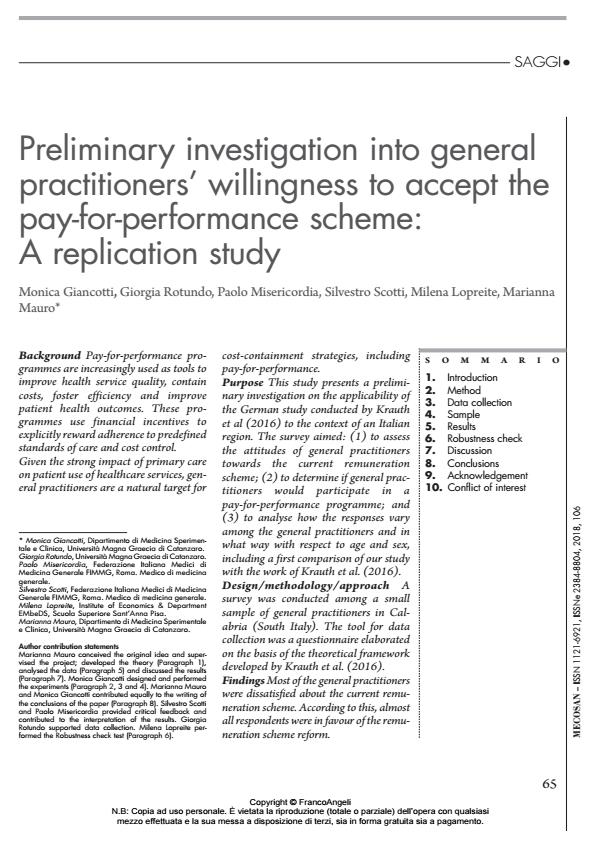Preliminary investigation into general practitioners’ willingness to accept the pay-for-performance scheme: A replication study
Journal title MECOSAN
Author/s Monica Giancotti, Giorgia Rotundo, Paolo Misericordia, Silvestro Scotti, Milena Lopreite, Marianna Mauro
Publishing Year 2019 Issue 2018/106
Language English Pages 28 P. 65-92 File size 664 KB
DOI 10.3280/MESA2018-106004
DOI is like a bar code for intellectual property: to have more infomation
click here
Below, you can see the article first page
If you want to buy this article in PDF format, you can do it, following the instructions to buy download credits

FrancoAngeli is member of Publishers International Linking Association, Inc (PILA), a not-for-profit association which run the CrossRef service enabling links to and from online scholarly content.
Monica Giancotti, Giorgia Rotundo, Paolo Misericordia, Silvestro Scotti, Milena Lopreite, Marianna Mauro, Preliminary investigation into general practitioners’ willingness to accept the pay-for-performance scheme: A replication study in "MECOSAN" 106/2018, pp 65-92, DOI: 10.3280/MESA2018-106004